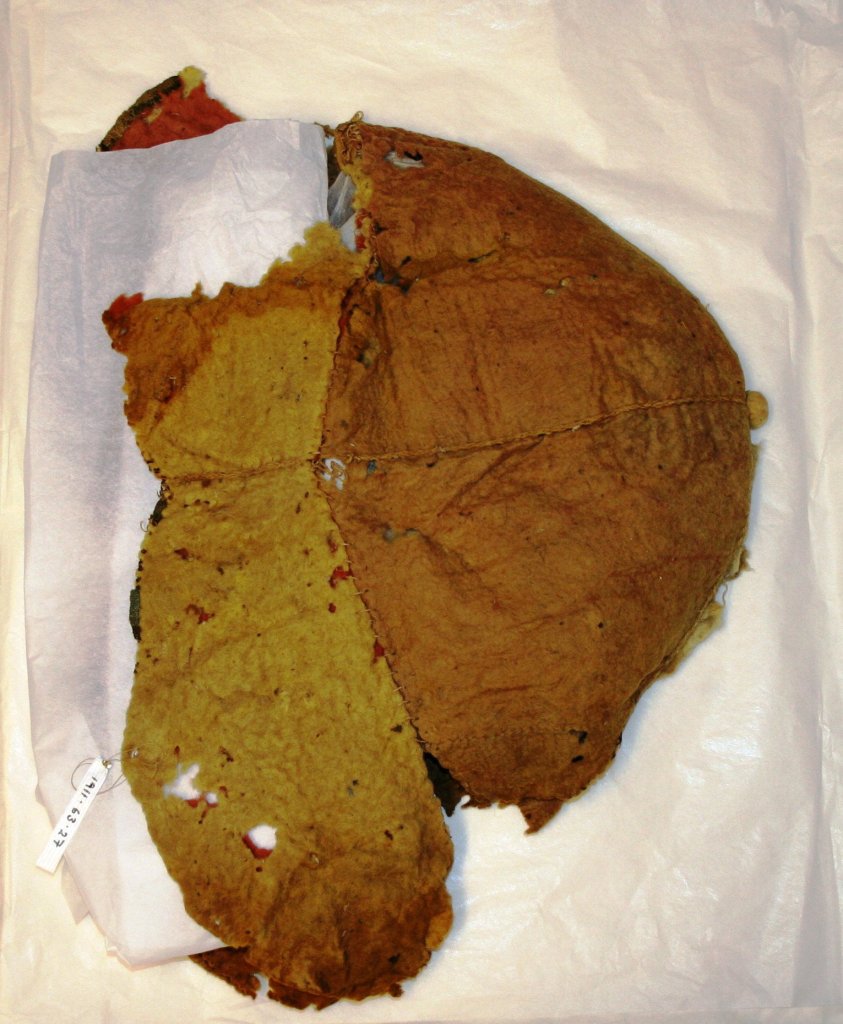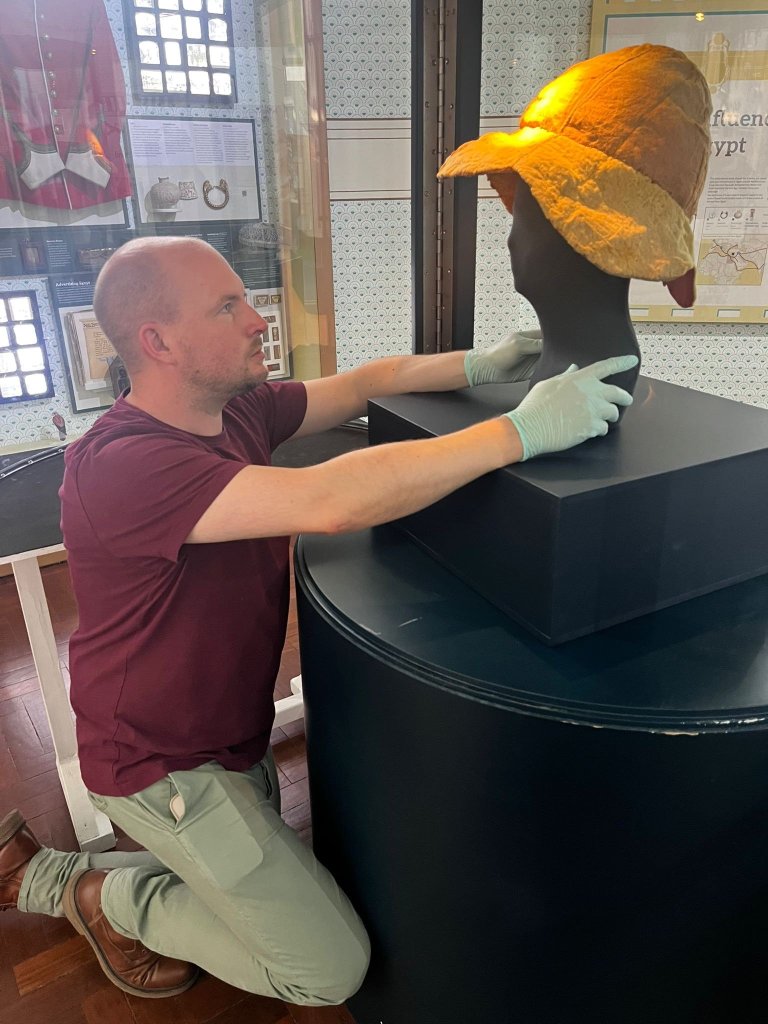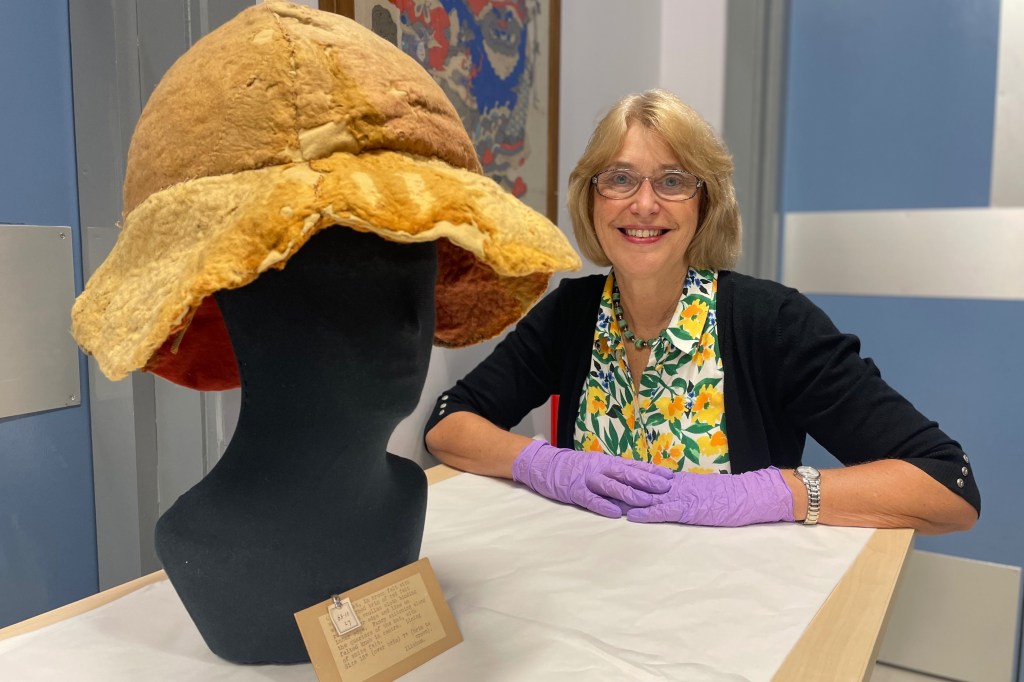This article was originally written by Charlie Fenton for SWNS — the U.K.’s largest independent news agency, providing globally relevant original, verified, and engaging content to the world’s leading media outlets.
Bucket hats are all the rage at the moment, but 2,000 years ago, ancient Romans were also donning a version of this modern trend to shield their faces from the sun — and visitors to England’s Bolton museum will get to see just how similar they look. Only three of these historic hats have been found, and one has recently been restored and put on display.
Considered the best-preserved example in the world, the artifact was likely made for a Roman military member after the conquest of Egypt following Queen Cleopatra’s death in 30 BCE. Wool hats like this one were used by soldiers to keep cool in the harsh desert climate. Although it resembles coverings from the Roman Empire circa 200 CE, it seems to have been adapted to help its wearer weather Egypt’s intense sun and sandstorms.

The hat can be viewed at the entrance to the Bolton’s Egypt galleries until September, at which point it’ll go on permanent display elsewhere in the museum — the two other known hats are held at the Whitworth Art Gallery in Manchester and a museum in Florence, Italy.
“It’s an incredible moment for Bolton to display such a rare and well-preserved item from ancient Egypt,” Cllr Nadeem Ayub, Bolton Council’s executive cabinet member for culture, said in a press release. “This remarkable object not only tells a global story, but it also reminds us of the power our museums have to inspire future generations, right here in Bolton.”
Sir William Matthew Flinders Petrie, an archaeologist in the late 19th and early 20th centuries, originally donated the item to Bolton’s first museum, The Chadwick Museum, over 100 years ago. Recently, it was taken out of storage and conserved by expert textile conservator Jacqui Hymans.
“I had the unique privilege to handle and investigate the construction and conserve this very rare felt hat,” Hyman said. “Planning the appropriate and sensitive treatment was paramount due to its fragility. Damage by moths had resulted in areas of missing felt, but by supporting and stabilizing these areas with similar hand-dyed fabric, the original shape of the hat was re-created. Suddenly, a flat, fragile, boxed item had come to life. This hat was made to be worn, but if only it could talk and tell us who made it and who wore it.”

Ben Ritherdon, director of Ritherdon & Co. Ltd, a U.K. manufacturing company that funded the restoration, underlined Hyman’s enthusiasm. “It was so exciting to learn that we had such a rare and fascinating object right here on our doorstep, in Bolton Museum, and it was a privilege for us to be able to contribute to its conservation,” he said. “With so many worthy causes for small businesses to support, it’s important not to forget that regional educational and cultural organizations, like our local museums, also rely on businesses in their community.”
RELATED: “Mona Lisa of Manuscripts” That Inspired a Disney Castle to Go on Display for First Time in 40 Years












